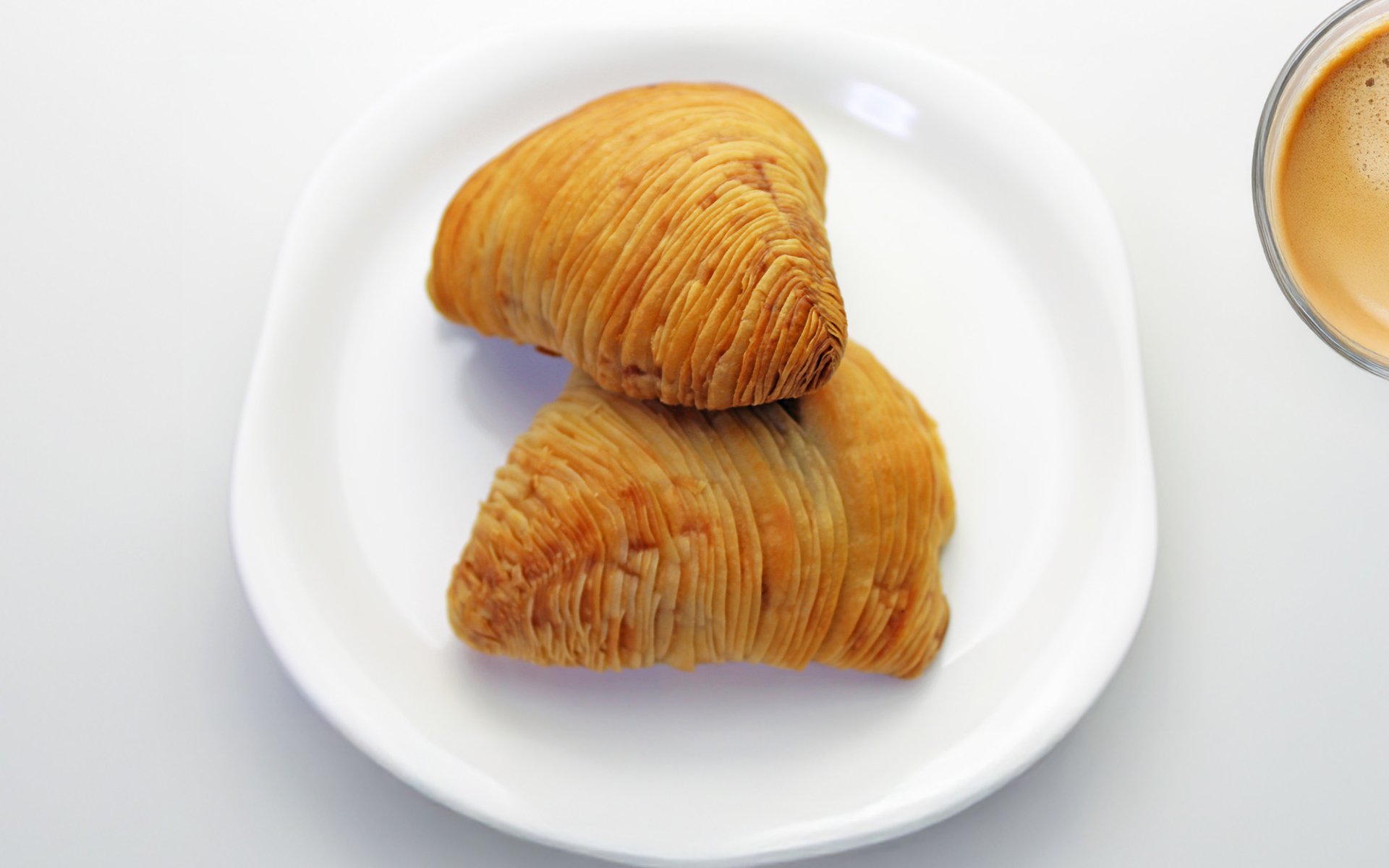Sfogliatella
Last updated: 21 May 2025

Get to Know Sfogliatella Italys Seashell-Shaped Pastry
Sfogliatella is a traditional Italian pastry known for its distinctive shape, resembling a seashell or lobster tail. Its structure features many thin, flaky layers stacked on top of one another, much like overlapping leaves. The name Sfogliatella comes from the Italian word sfoglia, which means thin layer or sheet.
The origin of Sfogliatella dates back to the 17th century at the Santa Rosa monastery in the town of Conca dei Marini, along the Amalfi Coast in the Salerno region of Italy. According to legend, a nun skilled in cooking had leftover semolina dough cooked with milk and sugar. Rather than waste it, she decided to repurpose the mixture by adding dried fruits and Limoncello, shaping it like a monks hat, and baking it. The result was a delicious pastry with a unique texture and flavor, which she named Santarosa after the monastery.
Santarosa quickly became popular among the nuns and was eventually sold to locals as a way to raise funds for the convent. Its fame spread, and the recipe became the foundation for what we now know as Sfogliatella.
However, the original Santarosa recipe remained a closely guarded secret within the monastery for over a century. It wasn't until the early 19th century that Pasquale Pintauro, a bar owner in Naples, acquired the recipe. He converted his establishment into a pastry shop and modified the recipe slightlyusing ricotta, semolina, candied fruit, and sugarwhile transforming the pastrys shape into a triangular seashell with crisp, paper-thin layers. This updated version became the iconic Sfogliatella we know today.
This transformation wasn't just about aestheticsit also enhanced the texture and overall eating experience. When bitten into, the thin, crispy layers crackle delicately, contrasting with the moist, creamy filling inside. This delightful combination of textures is one of the key charms of Sfogliatella.
Over time, Sfogliatella became a beloved pastry throughout Italy, with various adaptations, including:
Sfogliatella Riccia: The classic version with many thin layers and a filling typically made from ricotta, semolina, sugar, vanilla, and candied orange peel.
Sfogliatella Frolla: A variation using shortcrust pastry instead of the layered dough, giving it a softer texture but with the same filling as the Riccia version.
Coda di Aragosta (lobster tail): A creative twist on the Riccia-style dough, filled with sweet creams such as vanilla custard or chocolate.
In Naples, Sfogliatella is more than just a pastryits a cherished part of local culture and daily life. Bakeries and coffee shops across the city feature it as a staple item, and it is especially popular during holidays and celebrations, often given as gifts or served at parties.
As tourism has grown and global interest in Italian cuisine has expanded, Sfogliatella has gained international recognition. Tourists visiting Naples often seek out the pastry to experience its authentic, traditional flavor.
Tags :
Related Content
Get to Know Green Bean Casserole, a Simple Dish That Has Become a Symbol of the Thanksgiving Holiday


